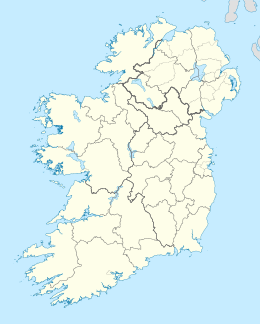Inis Oirr
| Native name: Inis Oírr | |
|---|---|
 |
|
| Geography | |
| Location | Atlantic Ocean |
| Coordinates | 53°03′29″N 9°31′39″W / 53.05806°N 9.52750°WCoordinates: 53°03′29″N 9°31′39″W / 53.05806°N 9.52750°W |
| Area | 8 km2 (3.1 sq mi) |
| Administration | |
| Province | Connacht |
| County | Galway |
| Demographics | |
| Population | 260 (2016) |
| Ethnic groups | Irish |
Inis Oírr / Inisheer (Irish: Inis Oírr, the island's official name, Inis Oirthir, meaning "east island", and traditionally Inis Thiar, meaning "rear island". In Gaeilge Inis Oírr is pronounced like Inish- Ear. It is the smallest and most eastern of the three Aran Islands in Galway Bay, Ireland. has a population of about 260 permanent residents ( according to the 2016 census), making it the second smallest of the Aran Islands in terms of population. Caomhán of Inis Oírr is the island's patron saint. There are three primary settlements - Baile an Chaisleáin (Castletown), Baile an Feirme ( Farm-town) & Baile an Lurgain .
The official name, Inis Oírr, was brought into usage by the Ordnance Survey Ireland. It may be a compromise between the traditional local name Inis Thiar and the previous official name Inis Oirthir. There is no Irish word corresponding to the second element in the official name. It seems from the annals that the island's name always contained the element iarthar or thiar in the sense of "rear or back island" and not "west" as is the usual sense of this word. The form Inis Oirthir, used by the 17th century scholar Ruaidhrí Ó Flaithbheartaigh, seems to have arisen out of his own misreading of the annals.
The island is an extension of The Burren. The terrain of the island is composed of limestone pavements with crisscrossing cracks known as "grikes", leaving isolated rocks called "clints".
The limestones date from the Visean period (Lower Carboniferous), formed as sediments in a tropical sea approximately 350 million years ago, and compressed into horizontal strata with fossil corals, crinoids, sea urchins and ammonites.
...
Wikipedia

